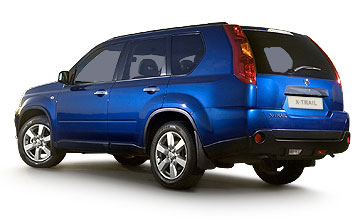BY PHILIP LORD | 29th Jul 2008

Now it has a turbo-diesel to add to the range, Nissan hopes it will find the 300-or-so sales that are missing from the balance sheet.
Between Nissan green-lighting the turbo-diesel X-Trail in February and it arriving here four months later, something unfortunate has happened to diesel fuel prices - due to Asian demand, diesel fuel prices have shot up to the point that the bowser price in Sydney at the time of writing is just under 30 cents per litre in favour of ULP. Not a great time to be spruiking a new turbo-diesel model, then.
At least Nissan had the foresight to peg the price premium of the dCi turbo-diesel to $1000 more than a petrol equivalent.
When asked if the X-Trail diesel was profitable for Nissan, all marketing boss Ross Booth would say was that the X-Trail line-up was profitable overall. It suggests that the $1000 premium Nissan charges doesn’t actually cover the full expense of the diesel hardware.
If you have thrift on your mind when considering an efficient turbo-diesel X-Trail, better rethink that one now.
If you whip out a calculator and use the most optimistic difference in claimed fuel consumption figures (2.1L/100km between the dCi manual and 2.5 manual) and Sydney’s current pump price of 143 cents per litre for ULP and 169 cents for diesel, you’ll make your $1000 price premium back somewhere just over the 100,000km mark, after which you'll start saving.
Even though the financial figures don’t look promising on current prices for the diesel, the rest of the figures certainly do. There is plenty of torque, of course, and the dCi engine is a smooth, quiet diesel with a penchant to rev out in an almost petrol-like fashion.
The tacho is redlined at 4500rpm but the auto will shift up at 5000rpm - and the manual will let the tacho flick to 5500rpm before stopping the fun.
The 110kW auto version is no rocket but then again it does provide the flexible midrange that turbo-diesels are known for, and seems to pick the right ratio of the six to for hill climbing and overtaking while being smooth slurring through the ratios.
The dCi auto doesn’t appear to be one of those diesels you’ll find struggling on the slow lane of the freeway, even when fully loaded. There is plenty of torque to make a molehill out of mountains.
Although Nissan says that a lack of an auto transmission cooler explains the lack of towing capacity for the auto (it can tow only 1350kg, compared with 2000kg for the manual) it was not so clear about why the auto version has a detuned version of the same engine.
The best answer appears to be that the auto can’t handle the torque potential of this engine, while the manual can.
The manual version of the dCi - with its additional 17kW over the auto - develops more power and torque than even the petrol X-Trail and feels it, too.
This is a quick compact SUV, but it won’t come close to shaking off a Forester XT turbo or RAV4 V6.
Even though the 127kW 2.0-litre has almost no turbo lag, and is very linear in its performance, there is sub-2000rpm lag there if you go hunting for it. Like any turbo-diesel, while it can be lugged along, don’t expect a petrol-like crisp response from idle.
The manual’s stubby, short shifts are a delight, too, with direct and positive changes, although the test car’s felt a touch notchy.
Getting into the now-familiar X-Trail interior serves as reminder of just how well laid-out and functional this compact SUV is. There are few complaints here, with the seats supportive, the instruments easy to read and plenty of adjustments for the driver to find a comfortable position.
Perhaps the rear occupants could do with a touch more legroom and the cargo area materials don’t appear too hard wearing, but this is nit-picking really.
While it certainly doesn’t have the grip or steering feel of a decent hatchback there is a fluidity to the ride and handling of the X-Trail.
Certainly when cornering hard you notice the sidewall flex and bodyroll, and the X-Trail is an understeerer by preference, but if you have experienced the first-generation X-Trail, the new model feels like a racing car. There is far less separating the X-Trail’s handling from its competitors’ than there used to be.
Off-road the X-Trail dCi is not transformed into a mini-Patrol by virtue of its diesel engine but its 4WD system is quite clever and seems to put the power down seamlessly on dirt.
A lack of underbody protection and a lack of clearance will be the first obvious drawbacks off-road, and despite a relatively clever hill descent control, it won’t make up for the lack of low-range gearing.
This is a well packaged, practical vehicle with the diesel engine providing the sort of supple, smooth and relaxed performance that you’d only get from a much larger displacement petrol engine.
The old money-saving argument may have been all but wiped out by the current fuel-pricing anomaly, but the X-Trail dCi has plenty else in its favour to be a worthy alternative to its petrol-powered brethren.